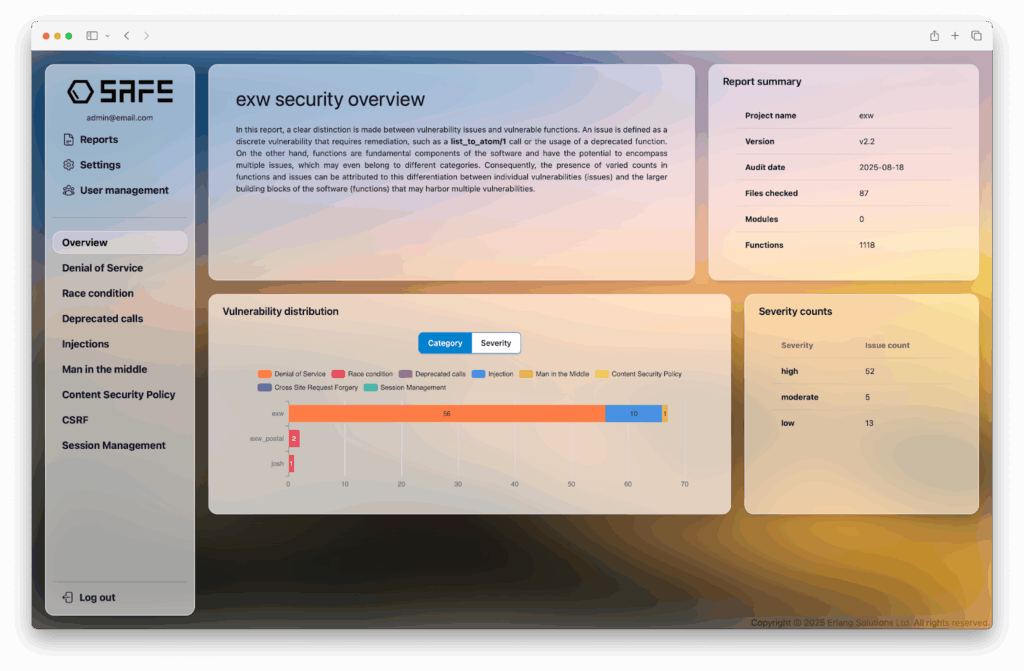-
Pl
chevron_right
Sam Whited: 2025-12-09 Trolley Barn Contra Post Mortem
news.movim.eu / PlanetJabber • 3 days ago - 01:12 • 9 minutes
On December 9th I returned to the Trolley Barn to DJ again for my friend Valerie Young. This time around my goal was to have a better mix of high energy and lower energy “groovy” tunes, and I wanted to be better prepared for tying in endings at any time, no matter how many times through the caller requested.
Prep

While I still prepped by marking each time through the dance with whether it looped cleanly or not, this time I (mostly) marked it with a cue instead of a 64 beat loop. I also named the cue based on what other cues I could jump to cleanly from it. For example, if I were on the last time through the dance I would mark if it looped cleanly itself, but also that I could jump backwards 3 times to cue 6 (or whatever the case may be). This way if I’m nearing the end of the dance but the caller is running it a bit longer I can reset without a single 32 bar phrase starting to get repetitive. I can also plan ahead by seeing that cue 6 lets me jump back to cue 8 or 9 afterwards (let’s assume these are the last two cues), which means that if the caller immediately calls 2 more times through I know that I can cleanly jump back to 2 more times without incident. I also mark a handful of things in the music such as if this time through the dance is a big recognizable build up (which I might not want to repeat even if technically it sounds okay), or if I shouldn’t jump back before a cue because the energy is significantly lower and we don’t want to kill the energy that had already been built up on the dance floor. This made it much easier to always follow the callers instructions and not have to scramble to wrap up the song or ask if we can do 4 times through the dance instead of 2 or what not.
The Set
I started out the set with a slowed down mix of “ Whelan’s ”, “ Baghad Gus ”, and “ Congress Reel ” all by Wild Asparagus. This was a medley that I had planned for my previous set but hadn’t managed to use, but it worked quite well to “ Whoever is Right is Right ” by Jim Hemphill. The only iffy moment I had in this medley was in one of the transitions where I thought I executed it perfectly, only to have the tune I was introducing jump half a beat ahead, breaking the rhythm. I had left the Quantize option on (which locks the two beat grids together even if you’re a little bit off) and unfortunately the beat grid on the song in question was about half a beat off at the point I was doing the intro.
Lesson learned: pay more attention to what options you’ve got selected (and reset them between songs, this would be a problem several times during the evening) and in a song where the beat grid can’t be right through the entire song (ie. because of tempo changes), make sure it’s correct at the point you’re going to mix in.
Whelan's / Baghad Gus / Congress Reel by Wild Asparagus, DJ mixFor the second dance Valerie picked “ Made Up Tonight ” by Erik Hoffman. This dance is relatively easy and in some ways similar to the previous dance so I decided the dancers could handle a little bit higher tempo and energy level. I did a mix of “ Bus Stop! ” by The Free Raisins and “ Rec Hall ” by Kingfisher. This is another mix I had prepared for my previous set and one of the ones I was most excited about performing. Unfortunately I completely broke the transition by just forgetting to bring the volume up on Rec Hall, so I ended up killing the music entirely for a few beats before I realized what was happening and brought it back in. It sounded terrible, and this one the dancers couldn’t help but notice, but Valerie kept calling so they were on beat still when I finally realized what was happening.
Lesson learned: go ahead and beat match and mix in a few bars early, then do the transition by bringing the volume up instead of just hitting play, or just remember to have the volume up first.
Bus Stop! / Rec Hall by The Free Raisins and Kingfisher, DJ mixAt this point Valerie decided to take the evening in a different direction from the modern, improper and becket contras that the Trolley Barn normally asks callers to stick to. She called “ The Steps of Waterloo ”, a traditional Sicilian circle, which I’ve never seen done at the Trolley Barn before. Since this one is both easy and a bit silly I used “[Flying Ice Cream]” by Giant Robot Dance which starts out very slow and groovy, then ramps up dramatically in the second half. Once the dance ramped up I mixed it with “ The Randomainians ” by The Great Bear Trio to make it last a little longer. This was the one mix and dance combo of the night that I was mostly extremely pleased with, when the tempo and energy ramped up half way through the song the dancers cheered and started frantically rushing to try and get to the basket swing in the limited time the (normally too fast) music allowed which was a lot of fun.
Lesson learned: prepare about twice as much music as you think you’ll need for the evening (to be fair, I already knew this, I was just struggling with the preparation for this set and didn’t end up with enough time to finish the other mixes I was considering).
Flying Ice Cream / The Randomanians by Giant Robot Dance and The Great Bear Trio, DJ mixContinuing Valerie’s theme of not doing modern contras she picked “The Hand Jive”, a proper ceilidh, by Colin Towns next. Because this dance is a bit more “fun” and contains some patty-cake like hand games I decided to do a simple but fun mix of “ Raccoon ” by Wake Up Robin and Disco Snails by Vulfmon and Zachary Barker.
Unfortunately I hadn’t considered that, easy as the hand clapping is, it required Valerie to do a significant amount more calling than she normally would do and never drop out, so picking a song with lyrics was a bad idea. A few people still got a chuckle out of the “Disco Snails” cameo though.
Lesson learned: make sure to pay attention to how much the caller will have to talk and ask if they plan on dropping out before introducing something with lyrics.
Racoon / Disco Snails by Wake Up Robin and Vulfmon and Zachary Barker, DJ mixWe took our mid-dance waltz break at this point for which I played “ Waiting for Landfall ” by Julie Vallimont, “ Indifference ” by the String Beings, and “ Norwegian Reinlender / Schottis From Idre ” by Wild Asparagus. I’d hoped that some of the dancers would know the schottische for the second part of the medley, but mostly it just confused everybody who kept trying to waltz even though it was no longer a waltz.
Coming back we were running a bit late so I decided to drop the show-stopper for the evening, a mix of “ Rainy Night ” by The Dam Beavers, “ Tween Spirit ” by Giant Robot Dance, and “ Smells Like Teen Spirit ” (which, of course, the previous tune is a cover of) by Nirvana. This was paired with “ Birminghams ” by Gary Nelson.
I played the first two tunes as a normal medley, then when Valerie indicated that she was ready for three times left through the dance I mixed in the actual Nirvana version just for the ending. I was worried this crowd wouldn’t care for it, but when the tune first came in (as “Tween Spirit”) a lot of the dancers started singing along, and when actual Nirvana came in at the end the energy really ramped up and there was a lot of cheering and stomping, so apparently even the younger members of the crowd were still excited about 90s grunge!
The only real problem with this dance is that I had one moment where I had a clean loop that I wanted to repeat but as I did so some of the dancers, knowing what came next in the song, started singing the next verse and then had to stop when the music wasn’t what they expected.
Lesson learned: when doing a pop song don’t do transitions that would break the progression of the song that people are already used to, even if they sound okay.
Rainy Night / Tween Spirit / Smells Like Teen Spirit by The Dam Beavers, Giant Robot Dance, and Nirvana, DJ mixAt this point I realized that I hadn’t prepared enough mixes for the dance and I was more or less out of material. For the next one Valerie asked to do a very short square dance, the “ Cumberland Square Eight ”. Since it was going to be so short and timing didn’t matter I played “ Heather’s Concussion ” by The Great Bear Trio without mixing it into a medley.
This tune is itself very short (only three times through) and far too fast for a normal contra, so I slowed it down (though still keeping it too fast) and sped it up slowly through the dance to mess with the dancers. They looked like they had a good time!
Heather's Concussion by The Great Bear Trio, DJ mixThis left us with just enough time for a no-walk-through contra. I had nothing else prepared but wanted to send us out on an easy-tempo dance after the various fast shenanigans from the rest of the night, but still have some good energy. I dug around in my library and ended up playing “ Apple Blossom ” by Great Bear. Since I didn’t have anything to mix this with I just played it through and looped once or twice near the end to keep the high-energy ending going. The dance Valerie picked was an easy ending dance that is unfortunately called “Unnamed Contra” and she didn’t know who wrote it.
Apple Blossom by Great Bear, DJ mixWe then closed down the evening (very late, much to the chagrin of the organizers) with “ Mending ” by “The Little Mercies”.
Stuff I Learned
A recap of the things I need to take away from the evening:
- Be thoughtful about resetting all controls, levels, mixing, effects, etc. between tunes. Possibly write down the initial state for each song so that you can re-set the board at a glance.
- Beat match early then use the volume sliders for transitions, don’t just start playing immediately at the entry point (or just remember to turn up the volume as you approach the mix point).
- Consider how much the caller will have to talk in any given dance and how soon they’re dropping out before mixing in vocals.
- For pop songs, don’t violate the order of the verses or breaks that people expect, even if the final result sounds okay. It’s jarring for the dancers who are used to it being a certain way.
And finally: relax and enjoy it! While I spend the entire evening worrying about how the sound dropped out for a moment, or my transition was a beat off and I saw the dancers stumble and catch back up, or whatever other disaster might have befallen, no one remembers any of that. I got a very nice message from the organizer the next day telling me how excited everyone was and how many conversations she’d had with people telling her how much they enjoyed the music!
Other Links
- The set list on MusicBrainz
- Recordings of the evening can be found on the Internet Archive












